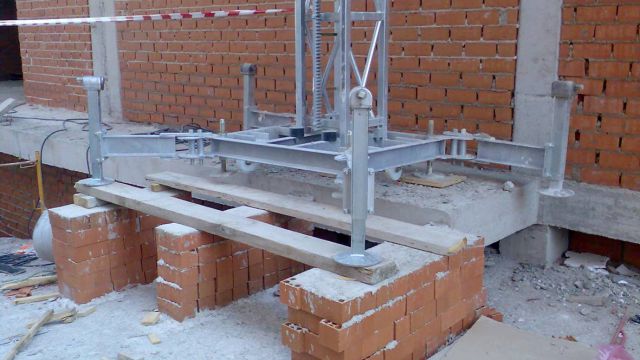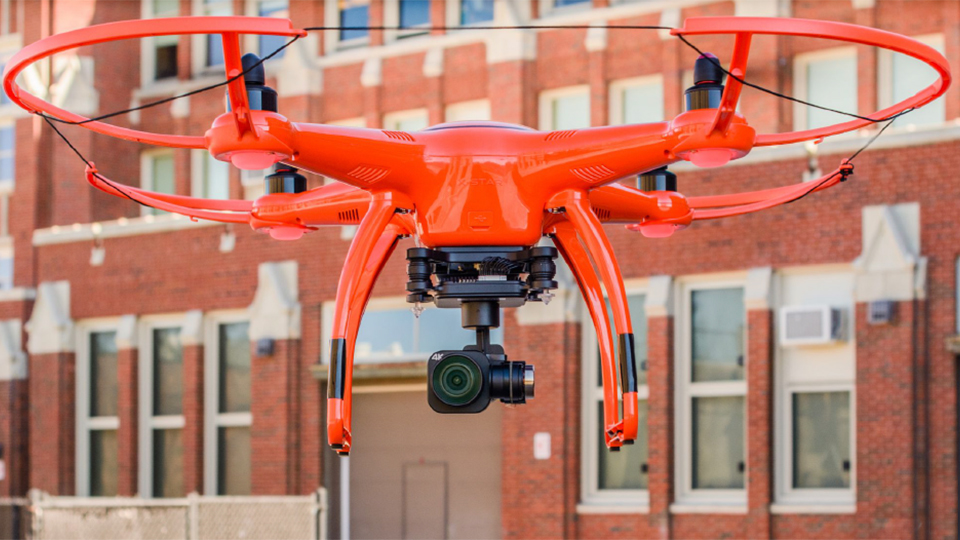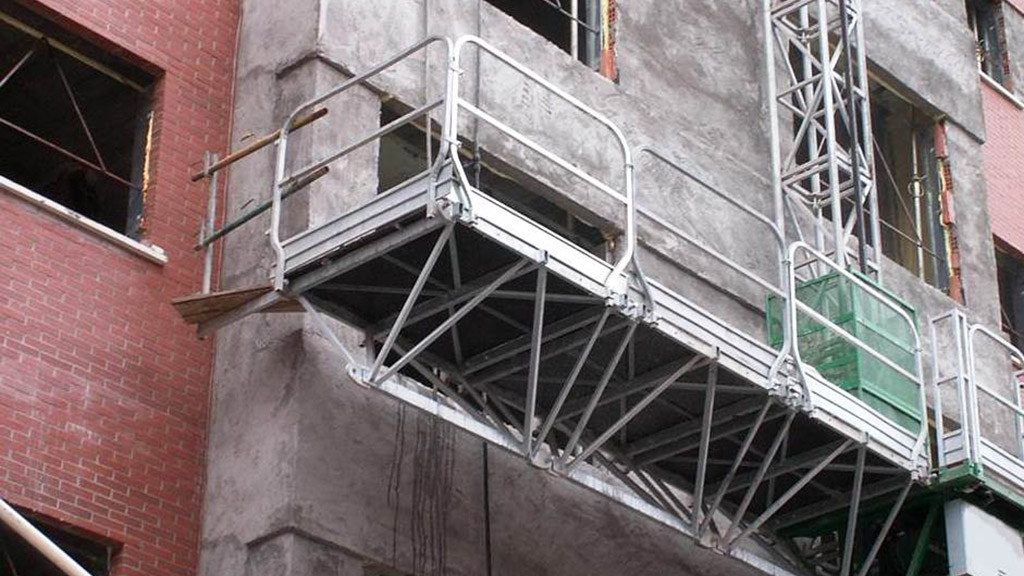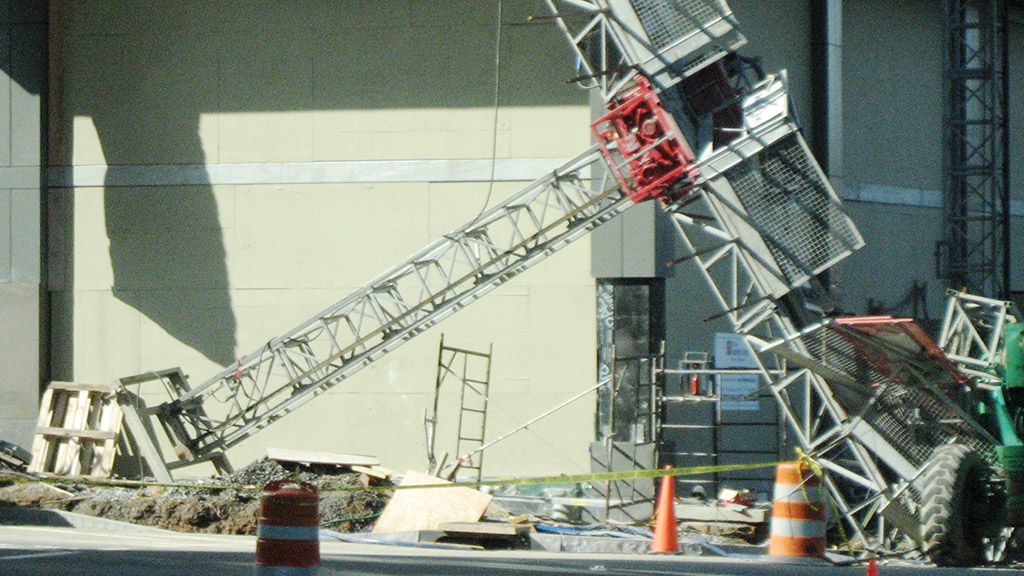Mast Climber Accident Analysis
Ten critical things you should consider
By Kevin Oshea
The mast climbing work platform (MCWP) is an amazing mason’s tool. It can enhance productivity and safety, reduce costs and increase profits. The safety record of the product is excellent, compared to other forms of powered access and scaffolding. However, more needs to be done.
Working at height is a necessary part of the construction process, but it’s a risky practice if workers are untrained, become complacent, use the wrong equipment, etc. Many times, employers can be guilty of putting productivity above safety; using insufficiently trained personnel; or giving authority to those who are ill equipped to assume it. A classic example is the “competent person” status. Tool box talks happen sporadically, and training never happens when everybody is too busy making money.
Let’s look back to the beginnings of MCWP use in the United States and, in particular, at the causes of fatality accidents. Ten reasons exist for recurring, prevalent accidents. Users, owners, operators or installers of MCWP equipment need to know this vital information, and act on it. The following detailed percentages are the percentages of total violations, i.e., a number of different citations might exist for the same accident.
Factor of safety 4:1
An OSHA regulation (1926.451(a)(1)) in the scaffold section applies to MCWPs. It states, “Capacity: each component must support without failure its own weight and four times maximum intended load.”Twelve percent of OSHA citations in the fatality accidents analyzed were for this issue. This mostly relates to components that are non-propriety and locally manufactured as well as added to the MCWP system to cope with some problem. An example might be reaching around a corner to a control joint, or profiling a balcony.
In all instances, there was no dialogue with the manufacturer regarding engineering verification that the added component would perform adequately.
No training
Fifteen percent of citations were for no – or insufficient – training. OSHA regulation 1926.451(f)(7) states, “Scaffolds shall be erected, moved, dismantled or altered only under the supervision and direction of a competent person qualified in scaffold erection, moving, dismantling or alteration. Such activities shall be performed only by experienced and trained employees selected for such work by the competent person.”Erecting and dismantling MCWPs is quite technical. It is dependent on a large number of variables and requires extensive training. Employers absolutely must ensure their employees are adequately trained.
How do you know if someone is adequately trained? That person has certification that is recognized by the manufacturer of the equipment. If installation personnel do not have recognized certification, a time my come when a company owner will have to explain why he chose not to adequately train his employees.
No competent person
This is 15 percent of the total. The establishment of a competent person is a major issue in construction. OSHA regulation 1926.32(f) defines the competent person: "Competent person" means one who is capable of identifying existing and predictable hazards in the surroundings or working conditions which are unsanitary, hazardous or dangerous to employees, and who has authorization to take prompt corrective measures to eliminate them.”In reality, two scenarios regularly present themselves to OSHA inspectors:
- The competent person has been given the authority but has no training and experience to properly fulfill the role
- The competent person has the relevant training and experience but no authority.
Not built to manufacturers’ specifications
Eleven percent of citations were given for this issue. This is, obviously, related to training, but not exclusively. Yes, there are workers who have never been trained properly, but workers also are out there who have been trained properly, but find themselves under pressure from superiors to “just get on with it,” if they have raised an issue.Fall protection
Fall protection equals 13 percent and still is a major issue. This is a minefield for the uneducated and untrained on the subject. Is the contractor using a fall arrest or fall restraint system? To where do the workers attach? Is there a rescue plan? Do employees know how to use and inspect their personal fall protection equipment (PFPE)? Have they been trained to use it and inspect it? Since a fall protection plan is usually job specific, is it covered in tool box talks?Many OSHA regulations exist with regard to fall protection, and it’s difficult to navigate through the stuff. So, get some expert help.
Pre-use inspection (8%)
Pre-use inspection accounts for 8 percent. Remember, every MCWP must be inspected before use. Manufacturers will have a format for recording the inspection, and it will detail the items that require inspection. Follow it, and remember that whoever is doing the inspection must be appropriately trained.
1926.451(f)(3): “Scaffolds and scaffold components must be inspected for visible defects by the competent person before each work shift and after any occurrence that could affect a scaffold’s structural integrity.”
Planking
Planking equals 9 percent. OSHA will always take an interest in planking, and they will stop the job until it’s correct. There are rules on damaged plank, opaque finishes on plank, overhangs, overlaps, support distances, etc. It’s really important to know them. OSHA regulations on planking begin at 1926.451(b)(1).Over/eccentric loading (8%)
Rule 1926.451(a)(6) states, “Scaffolds must be designed by a qualified person, and must be constructed and loaded in accordance with the design.” MCWPs have different load-bearing capabilities, depending on their configuration and how they are built. They have designated point load areas, in addition to uniformly distributed load capacity. A competent person should know this specific information, and it should be conveyed to the users by way of training and signage in the platform.No hazard analysis (6%)
No hazard analysis weighs in at 6 percent. A competent person is one who is capable of identifying existing and predictable hazards.This is a major deficiency in most of the competent person analysis done post-accident, and yet, it is one of the primary functions of a competent person. An employer has responsibilities under the 5(A)1 rule, or as it’s more commonly known, “the general duty clause,” to provide a place of work that is free from recognized hazards.
The owner generally passes this responsibility to his competent person. However, the analysis is never done, partially done or, just as bad, done but not being written down. When hazards are identified by the competent person, he should stop the job until a safe solution can be found. Once a safe solution is found, it needs to find its way into training and tool box talks.
Stability (5%)
Stability equals 5 percent. Rule1926.451(c)(2) states, “Supported scaffold poles, legs, posts, frames, and uprights must bear on base plates and mud sills or other adequate firm foundation.”Rule 1926.451(c)(2)(ii) states, “Unstable objects must not be used to support scaffolds or platform units.”
MCWP stability is vital, not only during erection, but also when in use. Stability also is crucial during dismantle. An MCWP that is 200 feet high can put 12,500 pounds or more of load onto a mudsill. Live load elements can potentially add to and exacerbate the load impact by mudsill destabilization, ground compaction, etc. A MCWP must be stable during erection, during use and during dismantle, and therefore the mudsills, jack legs and ground conditions must be inspected daily.
Support, knowledge and information exist for equipment owners to use to improve safety. Almost all of it is free, so use it. Improve safety, your productivity and your profitability by talking to the manufacturer and building a healthy relationship between your company personnel and your manufacturer’s support people. You’ll be really glad you did.
Originally published in Masonry magazine.
About the Author
Kevin Oshea is director of safety and training for Hydro-Mobile. He has served as the Safety Committee Chairman for the Mason Contractors Association of America.





















